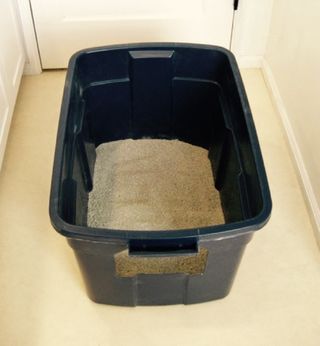Play
What Your Senior Cat Wishes You Knew
Is your older cat slowing down? Pain may be playing a bigger role than you think
Posted January 16, 2018

My cat, Ursa, is now 18 years old. She and I have lived together since she was 10 days old and brought in as a stray in Boston. While I may be biased, she is perhaps the greatest cat in the world. Several years ago, Ursa began showing signs of slowing down and stopped jumping up to the bathroom sink for a drink of water, a longstanding morning ritual for her. In fact, Ursa had changed how she was doing a bunch of things, but it was the change in this daily occurrence that made me finally take notice.
Cats are special companions, present in an increasing number of homes, and their long lifespan means they can be with us for many years. Often, they come in as rambunctious kittens and mature into regal adults. As they age into their golden years, however, cats may show decreased activity and mobility, coupled with changes in social behavior and mood. These changes in behavior are often chalked up old age, but, in fact, they may reflect a hidden cause: pain. A common painful condition in older cats is degenerative joint disease, or arthritis. In fact, over 90 percent of older cats will have evidence of degenerative joint disease and many will feel significant pain in one or more joints.
“Wait,” you say, “my older cat might sleep more than she used to, but she is not limping.”
Interestingly, while you may detect a change in the way your cat walks if you watch carefully, limping is not a prominent feature of arthritis in cats. Instead, you have to hunt for different signs:
- Watch how she goes up or down the stairs—does she bunny hop or hesitate?
- How about jumping up? Does he hesitate, or does he fail to clear the jump with his back legs?
- What about jumping down? A cat with pain may reach way down before take-off, which seems to decrease the height of the jump, or may land with a thud.
- Is he breaking his long leaps into smaller steps, like using the ottoman to get next to you on the couch, rather than just jumping from the floor to your lap?
While we can’t stop them from getting older, there are measures we can take to keep our cats healthy and active into their senior years.
- Keep your cat engaged and active, including social interactions and opportunities for play. I often hear people say their cat doesn’t like to play anymore, but that may just mean they aren’t interested in the current offerings. Think outside the box by offering new (and often changing) interactive or food-dispensing toys.
- Modify your cat’s environment to encourage her to stay active. Remember those small jumps? Placing a stool or other manageable prop near favored resting or eating spots can allow your cat to continue to reach that window seat sunbeam, or that cozy spot on your lap. These comfort activities are important for quality of life.
-
Provide a heated or thermal bed—your cat will thank you for it!
- Some cats may appreciate a low-sided or easy-entrance litterbox, as they can no longer scale the height of their current box.

Most important is acknowledging that pain might now be part of your cat's daily life. If you suspect that this is true, ask your veterinarian about an evaluation and treatment options. Currently, there are fewer pain medications available for cats than for dogs, but options do exist and new ones are on the horizon. Pick one or more measurable signs your cat is exhibiting—such as willingness to jump up or down—that can help you evaluate whether a treatment is working.
People are often amazed by what their cats can still do (and still want to do!) when their pain is properly managed. For Ursa, it has meant a return to jumping up to the sink every morning for a quick drink. For now, she takes the jump from the floor, but I’m keeping that stool there just in case.
Author: Margaret Gruen, DVM, PhD, DACVB


